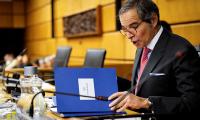Nations are preparing for COP29 to negotiate key issues to limit the global temperature to 1.5 degrees C and mitigate climate change impacts.
The frequency of climate-led disasters is higher in developing nations as compared to developed nations which are responsible for increasing global temperature due to their unsustainable path of development.
Moreover, limited resources available to developing nations are spent on relief and rehabilitation efforts after such disasters. Resultantly, their staggering economies further slow down. As we can see, Pakistan is still looking for resources to recover and rehabilitate the affected population after the floods of 2022.
Such an unequal distribution of the burden of negative impacts of climate change led developing nations to demand compensation for their suffering. At COP27, countries agreed to create a Loss and Damage Fund to compensate for the developing nations facing disasters due to climate change caused by the unsustainable development path of rich nations.
The creation of the Loss and Damage Fund at the opening session of COP28 was hailed by developing nations and declared a major step towards achieving their climate rights. Around $700 million in pledges were announced immediately by rich nations for the fund for recovery, rehabilitation and reconstruction activities in the wake of climate-led disasters in developing countries.
Some important aspects of the L&D Fund were also decided in COP28 regarding composition, structure and procedural matters. The board of the Fund will comprise 26 members, with only 12 members from developed nations. However, the final governance and financial structure will be decided at COP29 to be held in Baku, Azerbaijan this year.
There are several important areas to analyze to ensure the full operationalization of the L&D fund. First, pledges cannot be counted as money until the actual amount is transferred to the fund. Also, demands for support from developing nations impacted by climate change disasters are in billions but the amount announced is in millions.
Many developing countries witnessing climate change disasters are requesting to provide support. Pakistan is still looking for $16 billion to rebuild its infrastructure demolished by the 2022 floods. Somalia also faced flash floods in 2023 affecting 460,000 people. Chad is also declared a vulnerable country to climate change and witnessed flooding in 2022, affecting one million people.
So, the first challenge is to collect enough funding to support all developing countries affected by climate change disasters to fulfil the purpose of this Fund. The finances being contributed by developed nations to the L&D Fund are voluntary. The financial contribution must be equivalent to the responsibility of various rich nations for causing climate change. However, there is no established mechanism/formula to extract money from developed countries that are responsible for climate change disasters.
The composition of the board has been finalized with a secretariat and the appointment of its executive director. Two co-chairpersons, each from developing and developed nations will be elected among members for one year. The decision will be made through consensus and if there is no consensus, then through voting.
There can be possibilities of many challenges in the procedural matters of the L&D Fund. Many developing countries have a different nature of diplomatic relations with rich nations. They are already dependent on rich nations for various political and economic reasons.
So, under the umbrella of the L&D Fund, can they forcefully fight for their rights? It is also important to see what the impact of the L&D Fund will be on other funds like the Green Climate Fund. What if rich nations reduce their funding from other funds and contribute to the L&D Fund and overall impact? In such a situation, cumulative results will be the same as existing ones.
Another important challenge is the distribution mechanism of the Fund. The possibility of eliminating the role of third parties in the transfer of funds to reduce expenditures is also under discussion on the board. It also needs to be analyzed to see the cumulative impacts of the reduction of expenditures and fair and transparent distribution of the amount under such a mechanism. The adoption of transparency and accountability of developing nations that are receiving funds is also under question.
There is an apprehension among rich nations about the utilization of funds for its actual purpose. They want to be ensured that funds will be utilized for the affected population, not for other development projects or wasted in corruption. Similarly, how to prioritize climate-affected developing countries for the transfer of funds? Should the criteria for selecting countries for fund transfer be the magnitude of the disaster or a first come first serve basis or equal distribution of amounts among all developing countries that are hit by climate change disasters?
The future of the Loss & Damage Fund is dependent upon many technical questions to be addressed under its procedural and governance systems which will be discussed and cleared in the upcoming COP29 to be held in Azerbaijan.
The writer is a graduate of University of Oxford in Public Policy. She tweets/posts @zilehumma_1
Partnership between Pakistan and China in media and culture reflects shared commitment to strengthening bilateral...
This article focuses on single error committed by our respected judiciary which haunts me more than I would care to...
US still leads world in military spending and ability to project military power across globe
On July 3, UNGA adopted another resolution advocating for “free, open, inclusive” environment for AI development
Data, today, defines how we make decisions with tools allowing us to analyse experience more precisely
But if history has shown us anything, it is that rivals can eventually unite when stakes are high enough







